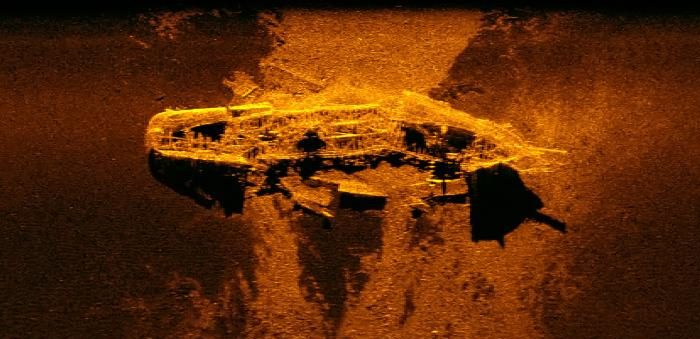Two shipwrecks were discovered 2,300km off the coast of Western Australia during the initial search for the missing Malaysia Airlines flight MH370. The shipwrecks have been identified as 19th Century merchant sailing vessels carrying cargoes of coal.
The Australian Transport Safety Bureau (ATSB) asked the Western Australian Museum to analyse sonar and video data taken in international waters by the search vessels Fugro Equator and Havilah Harmony in May and December 2015. The work was undertaken by Dr. Ross Anderson, Curator of Maritime Archaeology at the WA Museum.
[smlsubform prepend=”GET THE SAFETY4SEA IN YOUR INBOX!” showname=false emailtxt=”” emailholder=”Enter your email address” showsubmit=true submittxt=”Submit” jsthanks=false thankyou=”Thank you for subscribing to our mailing list”]
Dr Ross Anderson, Curator of Maritime Archaeology at the WA Museum, said:
Both wrecks were found at depths between 3,700 and 3,900 metres, roughly 36km apart. We used a combination of all of the data supplied by ATSB, historical research and maritime archaeological analyses to determine both wrecks were in fact 19th Century merchant sailing ships – one wooden and one iron – both carrying coal.
Dr Anderson said that none of the hull structure or loose ship’s timbers were observed at the site, appearing to have totally degraded, leaving only the remains of the vessel’s coal cargo and metal objects.
The second wreck was in a better condition. Sonar and video images identified it as an iron sailing ship with at least two decks, between 1,000 and 1,500 tons. Deck rails and stanchions on the bow, and portholes at the stern were visible.
Both ships are likely to had crews of between 15 and 30 men. Sometimes captains travelled with their wives and children on international voyages and both ships may have had additional passengers as well as cargo, the Western Australian Museum noted.
See more information in the PDF herebelow































































